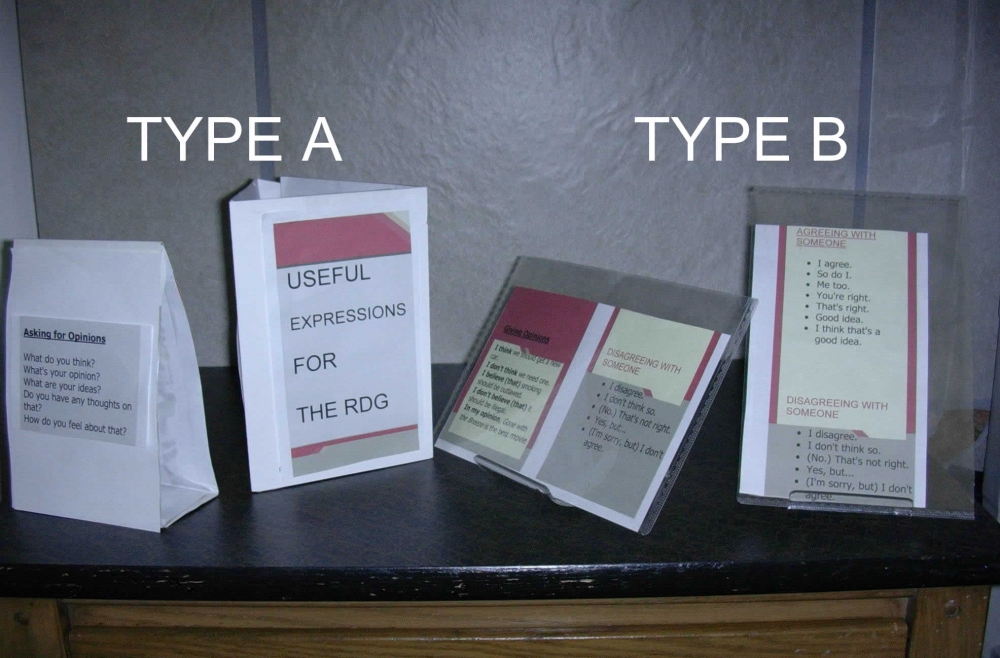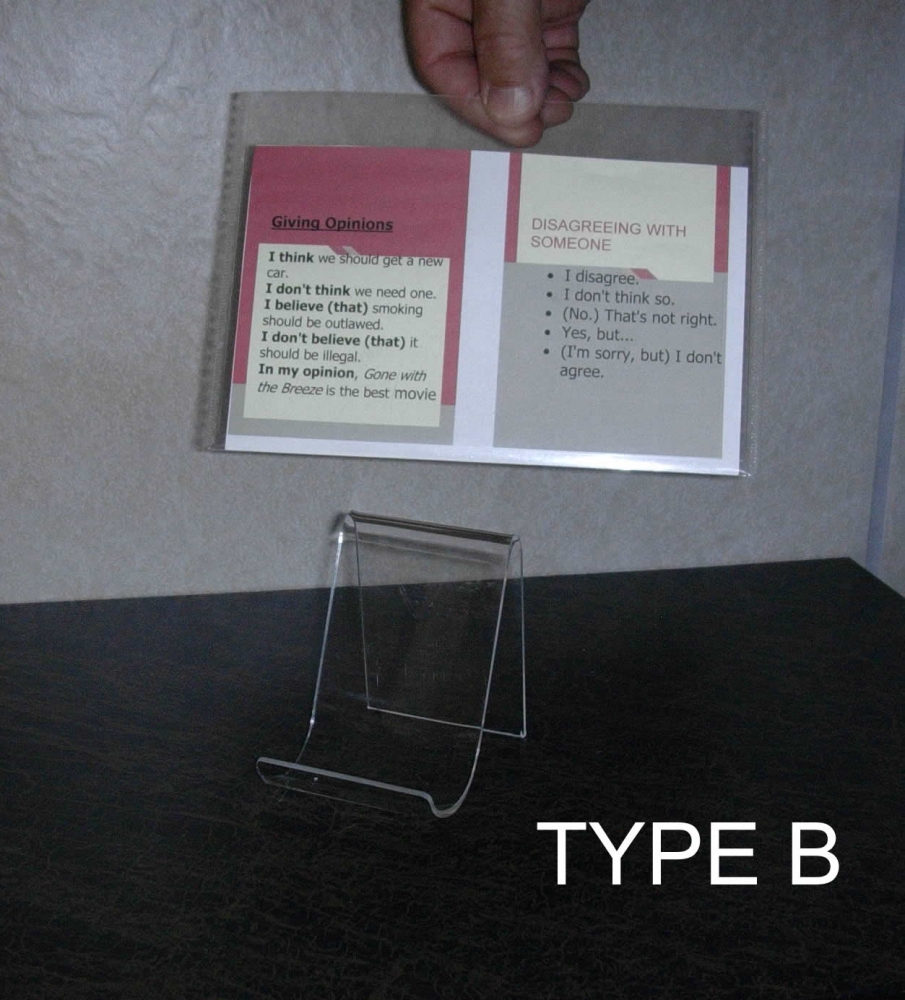|
Table tents are a classroom tool that can be utilized in tandem with several important features of English language education, such as vocabulary and communication strategies. This tested classroom practice can be used by TESOL educators immediately. The concept of table tents comes from the hospitality industry, but the TESOL Table Tent (T3) can be used extensively for group work in English-language education. Having T3 information/content available at each group can be of great use for student groups. The same information on the T3 can also be displayed on the classroom whiteboard or chalkboard for visual confirmation.
The Procedure for Implementing Table Tents
Step 1
Decide which type of table tent will work for your class and purchase or make the stand. Figures 1 and 2 show various types of T3. Example T3 Type A is made of a firm paper stock strong enough to stand on its own.

Figure 1. T3 Examples in Paper and Plastic
click for larger image

Figure 2. T3 Example Stand Type B - Two Components: Sleeve and Base
click for larger image
Small clamps can also be purchased to secure some types of T3 stands to the edge of an angled desk/table so that the T3 does not slide off of the student’s desk and onto the floor.
Step 2
Enter English language learning information (e.g., content, skills, student names, student group roles) into your table tent. Then print and place this information on all sides. Figure 3 shows an example of the types of language that can be incorporated.

Figure 3. Sample Content for T3-Related to Course Objectives
click here for larger image
Step 3
Next, attach the information to T3 and repeat the process for all groups.
Step 4
Bring the table tents to class and introduce them to students.
Step 5
Supplement the course instruction and content based on the information from the table tents you design.
With the steps in the T3 procedure outlined above, recall that language placed on the table tent, such as the useful expressions in Figure 3, can facilitate skill development for making summaries, both written and oral. T3s are a useful tool for classroom instruction, so try it. Hopefully, T3 will foster beneficial learning in your students.
____________________
James M. Perren is an Assistant Professor of ESL/TESOL at Eastern Michigan University. Dr. Perren earned his Ed.D. in Curriculum, Instruction and Technology in Education: Language Arts at Temple University in Philadelphia, Pennsylvania. James also earned an MA: TESOL from San José State University. His research interests include technology in language education, service learning in applied linguistics, intercultural communication, ESL teaching methodology, and second language acquisition.
|
Have a great idea you want to share with colleagues? Submit it as a TC Quick Tip and have it published in TESOL Connections.
Read TC Quick Tip submission guidelines here. | |